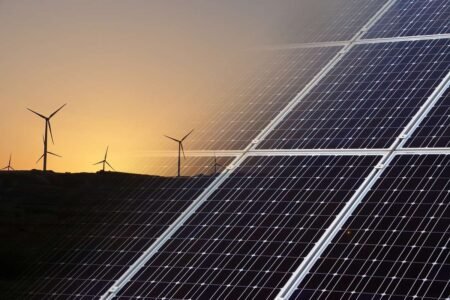As a response to the financial crisis and as an attempt to reinforce the EU’s energy supply, the Commission proposed in November 2008 a European Economic Recovery Plan that was endorsed by European Council in December. An important part of the plan is aimed at aiding economic recovery by granting Community financial assistance to projects in the field of energy. These projects will make a clear contribution to the objectives of security of energy supply and reducing greenhouse gas emissions. A financial envelope of 3.5 billion is foreseen in the following 3 areas: gas and electricity interconnection, the next generation of offshore wind technology and Carbon Capture and Storage.
Advertisement
The recent gas crisis and the volatility of oil prices have shown again the vulnerability of the European supply scheme. Indigenous resources are decreasing and Europe is becoming increasingly dependent on imports for its energy supply.
The crisis has demonstrated serious weaknesses in interconnection and in this context, leaving several Member States with no clear alternatives at the time of shortage. Energy infrastructure will play a crucial role, reducing dependence and increasing competitiveness. However, the actual financial crisis will not stimulate investment.
The Commission therefore proposes to use EUR 1,750 billion of the stimulus set out in the recovery plan to inject the necessary resources into key strategic interconnections. The Commission has used the second Strategic Energy Review (SER 2) to guide the choice of projects. The SER 2 has already identified a number of projects to address shortcomings and exploit opportunities, highlighting Baltic Interconnection, a Southern Gas Corridor, liquefied natural gas (LNG), the Mediterranean, Central and South-East Europe, and a North Sea offshore grid. The proposal of a Regulation establishing a programme to aid economic recovery by granting Community financial assistance to projects in the field of energy includes the list of about 20 projects that address the objectives of security and diversification of supply, both for gas and electricity, as well as maturity that allows works to begin quickly.
Wind is the worlds fastest growing renewable electric energy source. The wind industry aims to deliver 1214% of EU electricity consumption by 2020 and more than one fourth of it can come from offshore applications. By 2030, the contribution of offshore wind should reach up to 15% of the overall EU electricity production.
While onshore wind technology is close to maturity, the offshore applications still need further technological development based on large industrial scale demonstration projects. In the context of the European Economic Recovery Action Plan, an Offshore Wind Energy Programme of 500 million Euro is proposed. The Offshore Wind Programme focuses on providing support to large-scale offshore new demonstration projects in various locations in different Member States and possibly up-scaling the existing ones.
Support is given to projects already at a reasonable state of development on the basis of the ability for the EU to bring real added value to them. The selected projects should have a cross-border significance, be situated in deeper waters (up to 50m) and further from shore (up to 100km) to reap benefit from high wind resources potential.
Many projects require cross-border infrastructure and as offshore wind is technologically and logistically complex the EU has a particular role to play in encouraging investment that might otherwise be neglected.
CCS will achieve sustainable power generation from fossil fuels. It is an essential component of the global drive to halve greenhouse gas emissions by 2050 and should allow Europe to take full advantage of its indigenous resources of coal, oil and gas.
The Strategic Energy Technology Plan for Europe envisages in particular the commercial use of technologies for CO2 capture, transport and storage through demonstration at industrial scale.
Five projects related to CCS will be supported by the Recovery Plan. They each need a 250 millions investment to ensure their launch. All the projects are at an advanced state of readiness so as to ensure the beneficial effects of the investment as soon as possible.
The proposal would support projects, both for gas and electricity. These projects will represent a mix of technologies, geological conditions and Member States.






